The role of Frizzled3 and Frizzled6 in neural tube closure and in the planar polarity of inner-ear sensory hair cells
- PMID: 16495441
- PMCID: PMC6674805
- DOI: 10.1523/JNEUROSCI.4698-05.2005
The role of Frizzled3 and Frizzled6 in neural tube closure and in the planar polarity of inner-ear sensory hair cells
Abstract
In the mouse, Frizzled3 (Fz3) and Frizzled6 (Fz6) have been shown previously to control axonal growth and guidance in the CNS and hair patterning in the skin, respectively. Here, we report that Fz3 and Fz6 redundantly control neural tube closure and the planar orientation of hair bundles on a subset of auditory and vestibular sensory cells. In the inner ear, Fz3 and Fz6 proteins are localized to the lateral faces of sensory and supporting cells in all sensory epithelia in a pattern that correlates with the axis of planar polarity. Interestingly, the polarity of Fz6 localization with respect to the asymmetric position of the kinocilium is reversed between vestibular hair cells in the cristae of the semicircular canals and auditory hair cells in the organ of Corti. Vangl2, one of two mammalian homologs of the Drosophila planar cell polarity (PCP) gene van Gogh/Strabismus, is also required for correct hair bundle orientation on a subset of auditory sensory cells and on all vestibular sensory cells. In the inner ear of a Vangl2 mutant (Looptail; Lp), Fz3 and Fz6 proteins accumulate to normal levels but do not localize correctly at the cell surface. These results support the view that vertebrates and invertebrates use similar molecular mechanisms to control a wide variety of PCP-dependent developmental processes. This study also establishes the vestibular sensory epithelium as a tractable tissue for analyzing PCP, and it introduces the use of genetic mosaics for determining the absolute orientation of PCP proteins in mammals.
Figures

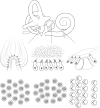

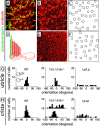
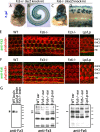

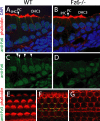
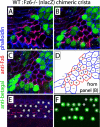
References
-
- Adler PN (2002). Planar signaling and morphogenesis in Drosophila. Dev Cell 2:525–535. - PubMed
-
- Beall SA, Boekelheide K, Johnson KJ (2005). Hybrid GPCR/cadherin (Celsr) proteins in rat testis are expressed with cell type specificity and exhibit differential Sertoli cell-germ cell adhesion activity. J Androl 26:529–538. - PubMed
-
- Bhanot P, Brink M, Samos CH, Hsieh JC, Wang Y, Macke JP, Andrew D, Nathans J, Nusse R (1996). A new member of the frizzled family from Drosophila functions as a Wingless receptor. Nature 382:225–230. - PubMed
-
- Bhanot P, Fish M, Jemison JA, Nusse R, Nathans J, Cadigan KM (1999). Frizzled and Dfrizzled-2 function as redundant receptors for Wingless during Drosophila embryonic development. Development 126:4175–4186. - PubMed
Publication types
MeSH terms
Substances
LinkOut - more resources
Full Text Sources
Other Literature Sources
Molecular Biology Databases
